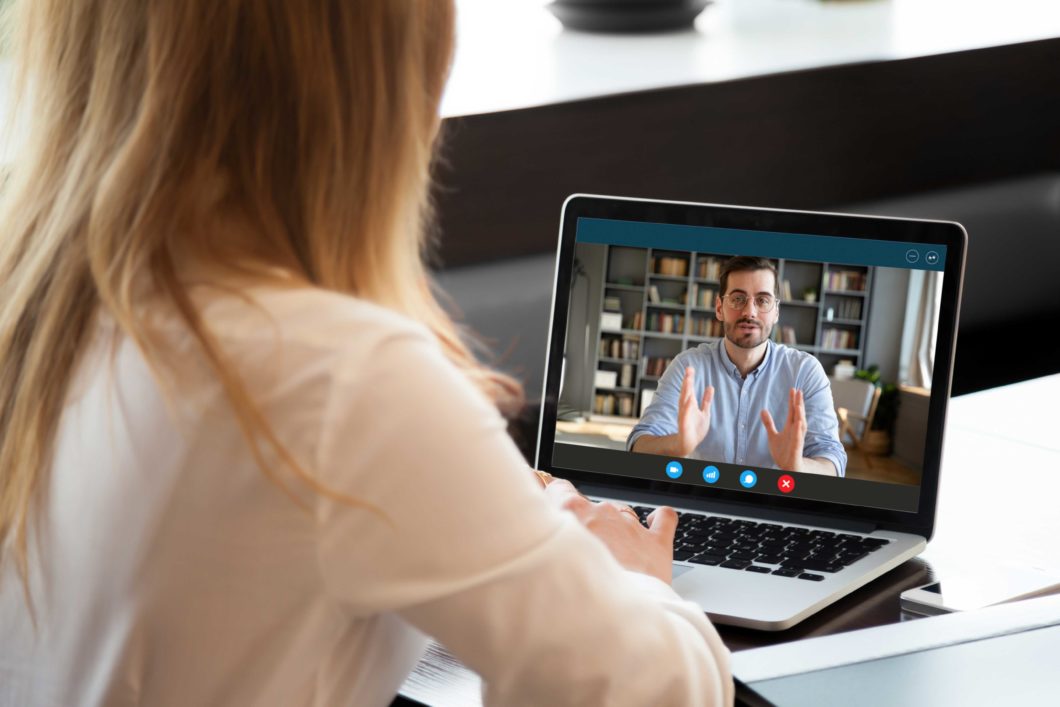He remembers the first time he met his son’s SLP a few months before. Virtual speech therapy seemed like a distant concept then, but given the circumstances, they had to try. The SLP was frazzled, and the curt replies she gave him and his wife left a sour taste in his mouth. But here they were again, on their next update call. His shoulders slump in clear exasperation.
Brrring, brrring, brrring. The endless whirring noise of the virtual platform cuts through the silence. He notices the ink stain on his shirt pocket, and quickly moves it out of view. Click. He perks up.
The video appears first—fuzzy for a minute, then clear. He can see his son’s SLP start to speak but can’t hear anything. “Tal vez solo me estoy ahogando en un vaso de agua,” he thinks. A moment passes, then the SLP begins, “Hello, it’s nice to see you. Let me just open up my slides real quick.” She fiddles with her presentation.
“Hello,” he begins, “It’s nice to see you. I’m wondering if you have time to talk . . .” Click-click-click goes her mouse. Her phone rings. She cranes her neck so her head is out of frame. He continues, “My son’s behavior at home, is . . . I think he may be acting out when he . . .” His words don’t match what wants to say, but he continues, “I think it’s difficult for him to use the device.”
She looks at him quizzically. He knew he had been clear, but he was growing frustrated with the repeated interruptions. Her phone buzzes. He tries again, “I want to talk about my son’s device.”
Cutting Through the Noise
Often, it’s the small interactions that can make or break the relationship we form with our clients, and their families and caregivers. This is true of both in-person and teletherapy. However, our in-person people skills aren’t always as quick to translate to the virtual world as we are.
In this example, the SLP was unable to facilitate high-quality communication, which has the potential to carry over and negatively impact the family’s future therapy interactions.
Don’t worry, though. It’s absolutely possible to create positive environments for our clients and their caregivers to express their concerns and feel heard—no matter the format.
What Can We Do?
I asked a few experienced teletherapists for their advice and compiled a list of top 5 ways we can enhance our active listening to improve teletherapy sessions as grad student clinicians and CFs:
- Be prepared. Place your device on a sturdy desk or table. Try to avoid backlit areas, or spots where there will be noise interference. Have the physical and digital materials you’ll need ready-to-go. Practice with the technology you’ll be using ahead of time. Your session is not the place to learn how to screen-share for the first time.
- Show up early. Keep in mind that notions of timeliness are a part of most cultures.
- Turn off distractions. If you must have your phone nearby for emergencies, make sure notifications are set to go off as quietly as possible. Keep your attention on the speaker.
- Responsiveness fosters positivity. Smile often and empathize when concerns are expressed. Elicit input with open-ended questions and provide ample wait time.
- Connect with an experienced telepractitioner. Strike up a conversation or offer to volunteer with a telepractitioner in your area, and you’ll pick up valuable information that you can use in your future practice.
In light of COVID-19, we’re all looking for tools that can help us improve our teletherapy practices, as well as build positive relationships with our clients and their caregivers. Active listening should be part of that repertoire of skills we all bring to the table. Hopefully, these tips help us hone in on that skill!

